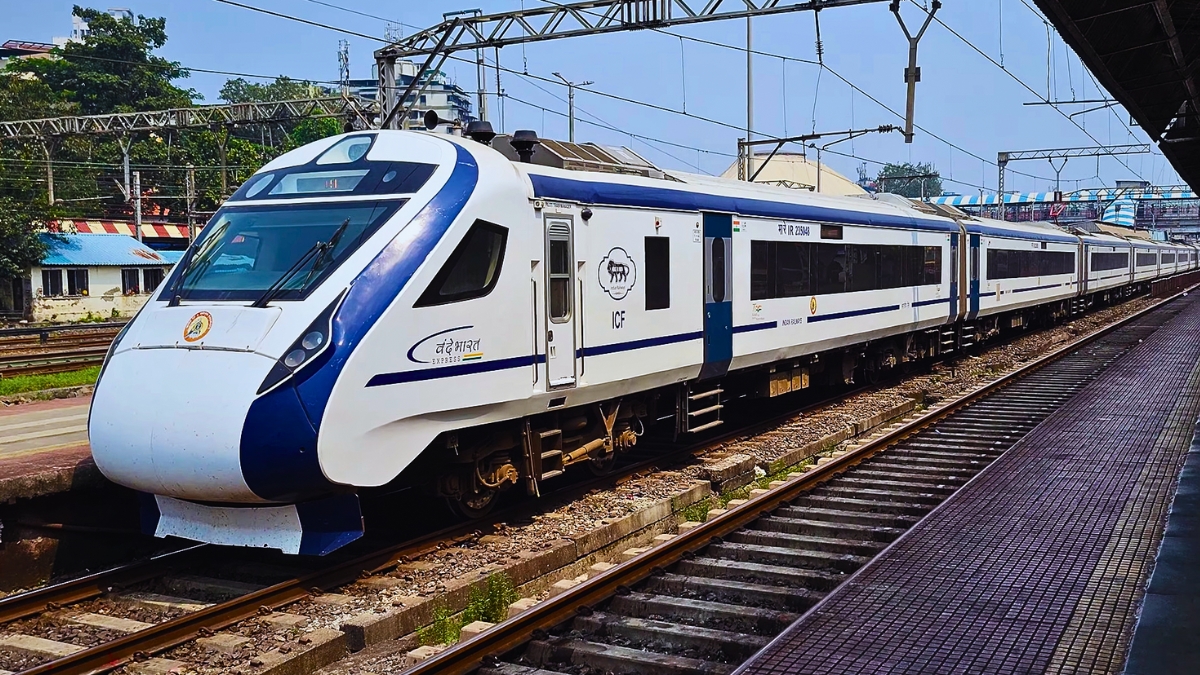New Delhi [India], August 21: At Patna Junction these days, you can already sense the season coming. Chai vendors are stocking up extra cups, porters are haggling louder than usual, and families keep asking the same anxious question at counters: “Bhaiya, ticket confirm ho jaayega na?” Every year around Diwali and Chhath, the story repeats. Trains overflow, waitlists shoot up, and homecomings turn into headaches.
This time, Indian Railways says it is ready. Railway Minister Ashwini Vaishnaw, speaking at Rail Bhawan, laid out a plan that mixes festival generosity with future ambition: over 12,000 special trains across India, a 20% discount on return tickets, and a raft of new services that place Bihar firmly in the spotlight while benefitting the rest of the country too.
Indian Railways – A Nationwide Lifeline for Festival Travelers
To understand why this matters, just picture the migrant worker in Surat saving all year to head back to eastern Uttar Pradesh, or the student in Delhi desperate to make it to Darbhanga for Diwali. Over 12,000 special trains will run between October and December. Vaishnaw said, “It is our priority that no passenger faces difficulty in reaching home or returning after the festivities.”
A tall claim, yes, but backed by numbers.
The effort follows discussions with Bihar’s Deputy CM Samrat Chaudhary, Union Minister Lalan Singh, MP Dr. Sanjay Jaiswal, and MP Sanjay Kumar Jha. While Bihar’s concerns were high on the agenda, the scale of the operation is pan-India. Extra services are being planned for Mumbai, Delhi, Kolkata, Hyderabad, and beyond.

The Rare Return Discount
Here’s the part that raised eyebrows: a flat 20% concession on return journeys. Passengers who travel between October 13 to 26 and come back between November 17 to December 1 will save money on their second ticket. It’s not every day the Railways gives such a direct festive discount. A man waiting at Anand Vihar station put it simply: “बस टिकट मिल जाए, दिवाली बन जाएगी। अगर सस्ती भी मिल जाए तो सोने पे सुहागा।”
For families travelling in groups, that saving could mean an extra mithai box, or gifts for nieces and nephews waiting back home. The gesture feels less like accounting and more like an acknowledgement of the annual bliss.
New Trains: Speed and Reach
Beyond the festive timetable, four new Amrit Bharat Express trains are being rolled out: Gaya–Delhi, Saharsa–Amritsar, Chhapra–Delhi, and Muzaffarpur–Hyderabad.
They’re not luxury trains, but faster, more affordable options for middle-class passengers. Think of a young man working in Hyderabad who can now reach Muzaffarpur without multiple changes. Then there’s the big one for Bihar: a Vande Bharat Express connecting Purnia to Patna. For years, only big cities flaunted this sleek service.
Now, passengers from smaller towns can feel the same pride. A local trader in Purnia joked, “अब हम भी सेल्फ़ी वंदे भारत के साथ डालेंगे।”
A Spiritual Journey on Rails
The Railways also leaned into India’s cultural heart. A Buddhist Circuit train will link Vaishali, Hajipur, Sonepur, Patna, Rajgir, Gaya, and Koderma, sites steeped in the life of Lord Buddha.
Pilgrims from Japan, Sri Lanka, and Thailand already visit these towns, but connectivity has been patchy. This train could change that. For local families, it offers an affordable way to rediscover heritage without expensive tour packages.
Infrastructure: Bihar as a Hub
The announcements didn’t stop at passenger trains. Long-term projects were also highlighted. The Buxar–Lakhisarai section will become a four-line corridor, boosting both freight and passenger capacity. Patna will get a ring railway, potentially easing the daily grind of congestion.
A new rail link will connect Sultanganj and Deoghar, important for religious tourism, while a fresh Patna–Ayodhya train is also planned.
Supporting measures include a washing pit at Laukaha Bazar and several new road overbridges. For once, these aren’t vague promises; they’re tied to approved projects.
Leaders Thank, Citizens Hope
Deputy CM Samrat Choudhary and other leaders lined up to thank Prime Minister Narendra Modi for clearing these projects. Their words were full of gratitude.
Chai sellers, coolies, and ordinary passengers all agree: more trains, more chances. And that’s enough to stir optimism.
More Than Numbers
To be fair, 12,000 trains won’t magically erase overcrowding. Long queues and last-minute cancellations may still haunt passengers. But what’s striking is the intent. There’s short-term relief, special trains and discounts, and long-term fixes through infrastructure. Together, it feels like an attempt to treat festival travel not as an afterthought but as an event in itself.
As Diwali diyas light up balconies and Chhath songs echo along the Ganga, millions will step into coaches that didn’t exist last year. Some will complain, some will rejoice, but most will quietly thank the system that managed to get them home. Because in India, festivals are not just about rituals, they’re about the journey back home.


